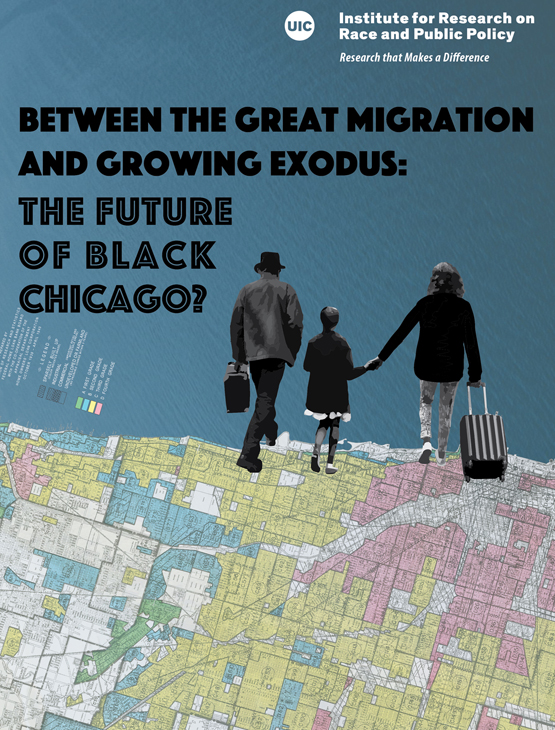NewsUIC Report Examines Black Population Loss in Chicago
“Between the Great Migration and Growing Exodus: The Future of Black Chicago?” The Great Migration of blacks to Chicago from the 1920s through the 1950s ushered in a major period of transformation for the city. In contrast, the past three decades are far removed from that era as Chicago’s black population has dropped over 350,000 residents since its peak of almost 1.2 million in 1980. The dramatic decline has led to an ongoing national storyline suggesting that black Chicagoans’ exodus from the city is being fueled by violence in their neighborhoods. “This popular narrative overlooks the effects of government policies that are displacing black Chicagoans and how these dynamics are different from neighborhood to neighborhood,” says Amanda Lewis, director of the Institute for Research on Race and Public Policy and a professor of African American studies and sociology at the University of Illinois at Chicago (UIC). “The more than 830,000 black Chicagoans still here make the city an important center of black life and culture in the United States and reinforces the urgency in ensuring that city policies are designed to address the needs of all neighborhoods and all Chicagoans.” A mix of factors is involved and others aren’t well defined, but inequality stands out as a leading element, according to a new report coauthored by Lewis and researchers from the institute. In “Between the Great Migration and Growing Exodus: The Future of Black Chicago?,” the demolition of public housing, the closing of Chicago Public Schools, the continuing effects of foreclosures and the housing crisis, health care and food deserts, high unemployment rates, and overpolicing by local law enforcement are cited among the dynamics impacting where black Chicagoans live and why many are leaving the city. The report’s key findings, which focus on data and analysis pertaining to three aspects of the city’s black population decline, include the following: Chicago’s Population Trends Over the Last 100 Years • Since the 1990s, levels of inequality have increased for black residents both within Chicago and in relation to other cities, which has corresponded with a significant loss of the black population over the last three decades. Population Trends by Neighborhood • When comparing changes across race, the researchers find the neighborhoods that have had an increase in white population have generally had a decrease in black population, and vice versa. Emigration Routes From Chicago • When compared with white people moving out of Cook County, however, on average blacks are relocating to areas with lower educational attainment, higher unemployment, and lower earnings. While disinvestment from black communities has received attention, the accounts of how predatory contract leasing and punitive fines and fees have affected the black community remains largely overlooked, contends Stacey Sutton, UIC assistant professor of urban planning and policy. Black residents “are unjustly shouldering the economic burden of the punitive city,” wrote Sutton, who authored one of the report’s featured expert commentaries. “Our goal in producing this report in collaboration with many area experts is that the information provided will inform more equitable policies to reverse the loss of Chicago’s black population and that doing so will improve the lives of all Chicagoans,” Lewis says. Source: University of Illinois at Chicago |


